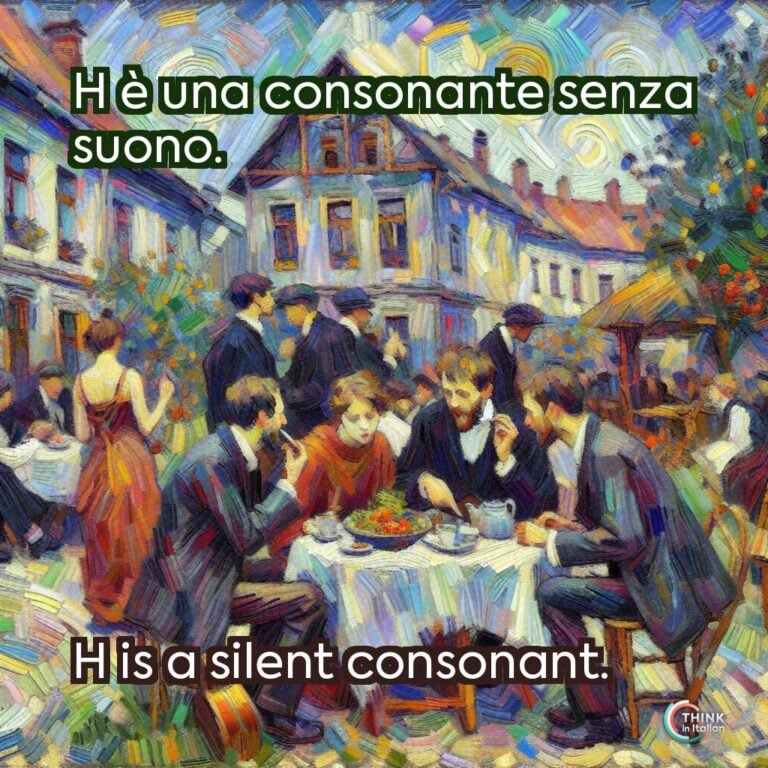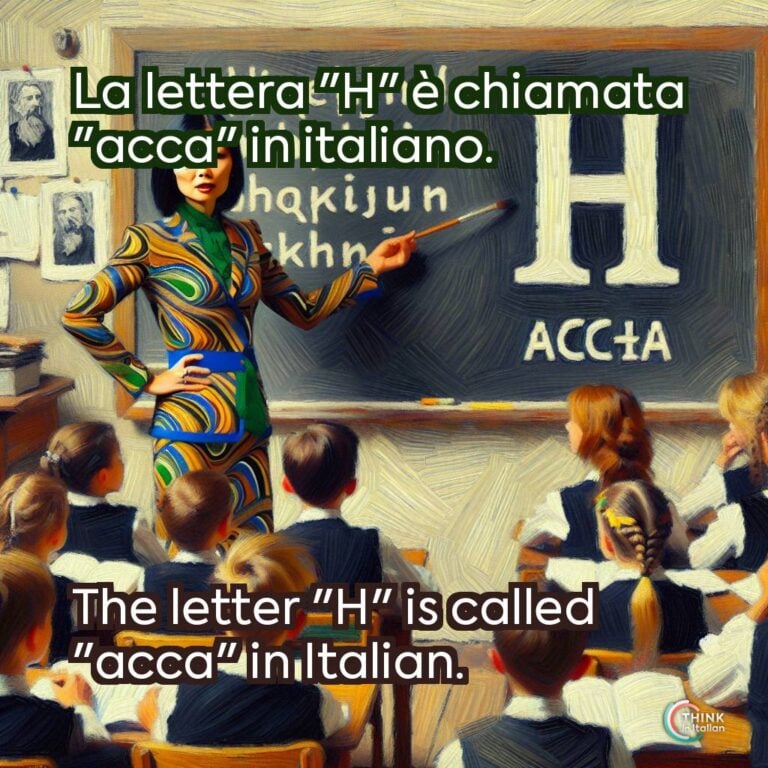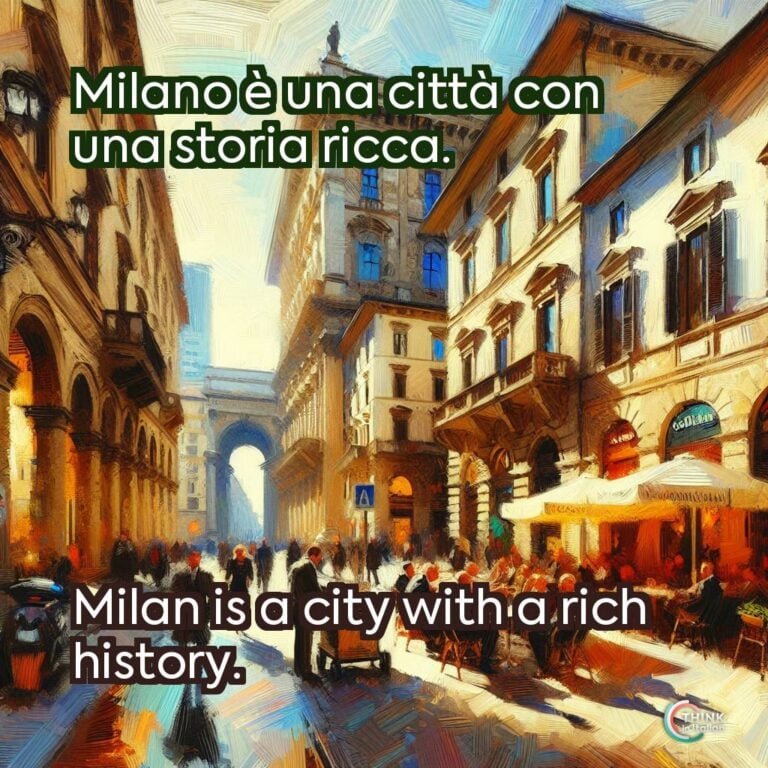The Italian Alphabet
The Italian alphabet consists of 21 letters, derived from the Latin script. Unlike the English alphabet, Italian doesn’t use the letters J, K, W, X, and Y. However, they do appear in foreign words and acronyms.
Let me guide you through the basics of the Italian alphabet. I will first divide it into the two main groups of vowels and consonants, and then, I will show you its letters order and pronunciation.
The Italian alphabet consists of:
- 5 vowels: A – E – I – O – U
- 16 consonants: B – C – D – F – G – H – L – M – N – P – Q – R – S – T – V – Z
Gain instant access to our free Italian alphabet lesson by submitting the form below. Start your Italian journey today!
Italian Alphabet Letters
- A – “a”
- B – “bi”
- C – “ci”
- D – “di”
- E – “e”
- F – “effe”
- G – “gi”
- H – “acca”
- I – “i”
- L – “elle”
- M – “emme”
- N – “enne”
- O – “o”
- P – “pi”
- Q – “qu”
- R – “erre”
- S – “esse”
- T – “ti”
- U – “u”
- V – “vu”
- Z – “zeta”
As I mentioned before, the letters J, K, W, X, and Y are used primarily in foreign words, names, or technical/scientific terms but are not native to Italian vocabulary.
However, you should know how they are spelled out as well:
- J – “i lunga”
- K – “kappa”
- W – “doppia vu”
- X – “ics”
- Y – “ipsilon” or “i greca”
How to Pronounce Italian Letters
Accents
When classifying the letters of the Italian alphabet in linguistics, we say that there are 7 vowels, not 5. This is because the Italian vowel e and o have two possible pronunciations:
- E – [e] and [ɛ]:
- [e]: this is a closes vowel, similar to the sound in “chaos” in English, for example perché (why).
- [ɛ]: this is an open vowel, similar to the sound in “bet”, for example bene (well).
- O – [o] and [ɔ]:
- [o]: closed vowel, similar to the sound in “go” in American English, as in sole (sun).
- [ɔ]: open vowel, similar to the sound in “saw”, as in morte (death).
Another important aspect of the Italian pronunciation is how to read the graphic accents. In Italian, we can place an accent mark on all five vowels. It does not really change the pronunciation of the vowel, but it denotes the stress pattern in a word.
Typically, the normal Italian stress pattern is on the second-to-last syllable. However, in words like città (city) the accent on the à shows that the stress is on the last syllable.
Tricky Sounds
The Italian language is a highly phonetic language; this means that learning how letters sounds in the linguistic environment is usually sufficient to correctly pronounce most of the Italian words.
However, there are some sounds that might not exist or be pronounced differently in other languages. Learning these is very important to develop strong pronunciation skills.
Here I will give you an overview of the trickiest sounds you may encounter when reading Italian words:
- gn: this sound is very similar to the Spanish ñ or the English ny as in “Canyon”. It is produced by placing the middle part of your tongue against the hard palate, just behind your upper teeth. Its pronunciation is consistent throughout all vowels.
- Examples: lasagna, bagno (toilet), gnomo (gnome).
- gl: this sound is very similar to the Spanish ll. It is produced by placing the tip of your tongue against the hard palate, right behind your upper front teeth. It is used with the vowel i only.
- Examples: famiglia (family), maglia (t-shirt), aglio (garlic).
- ch: this is the k sound. In Italian it is always followed by the vowels i or e, and it is produced in the same way as when you pronounce Italian words with the letter c followed the other vowels. The only difference is that with the vowels i or e you must graphically use the letter h.
- Examples: chiesa (church), chiave (key), but also casa (house), corpo (body), cuore (heart).
- gh: same as above. It is always followed by the vowels i or e but it is produced in the same way as when you pronounce Italian words with the letter g followed the other vowels. The only difference is that with the vowels i or e you must graphically use the letter h.
- Examples: ghiaccio (ice), ghepardo (cheeta), but also gatto (cat), mago (magician), guanti (gloves).
- g+i/e: this is the same sound as the English j as in “jam”. It is produced by placing the tongue against the roof of the mouth, just behind the upper front teeth, and by letting your vocal chords vibrate.
- Examples: gelato (ice cream), giraffa (giraffe)
- c+i/e: this is the “ch” sound as in the English word “chocolate”. It is produced by placing the tongue against the roof of the mouth, just behind the upper front teeth, without the vibration of your vocal chords.
- Examples: cielo (sky), cena (dinner)
- sc+i/e: this is the “sh” sound as in the English word “sheep”. It is produced by placing the tip of the tongue near the front of the roof of the mouth and by letting the air pass through. When followed by the other vowels, sc sounds like the “sk” sound as in the English word “school”.
- Examples: sciare (to ski), scena (scene), but also scala (staircase), scopa (broom), scusa (excuse).
Try them out reading the most mispronounced words in Italian, and challenge yourself!
The Letter “H”
The letter H in Italian is said to be silent. This means that, unlike English, when it appears in front of a vowel in Italian, it doesn’t influence the pronunciation.
However, as I showed you in the previous paragraph, it plays a unique role in conjunction with other letters, although it is never pronounced itself.
A perfect examples of silent H is the conjugation of the verb avere (to have):
- Ho (I have)
- Hai (you have)
- Ha (he/she/it has)
- Hanno (they have)
All these words are pronounced as if the H wasn’t there. Be careful:
- Hanno vs. anno: both are pronounced “anno”, but the first means “they have” while the second means “year”. Of course, you can understand which one you are talking about depending on the context.
Italian Alphabet With Italian Cities
Have you ever needed to spell you your name or surname? Well, in Italian we make use of the names of Italian cities to do so! Therefore, learn them in case you need someone to write down your name:
- A – Ancona
- B – Bologna
- C – Como
- D – Domodossola
- E – Empoli
- F – Firenze
- G – Genova
- H – Hotel (not a city, but it is commonly used)
- I – Imola
- L – Livorno
- M – Milano
- N – Napoli
- O – Otranto
- P – Palermo
- Q – Quarto (a district in Genoa, often used)
- R – Roma
- S – Savona
- T – Torino
- U – Udine
- V – Venezia
- Z – Zara (Zadar, historically Italian, now in Croatia)
If your name or surname has a foreign letter, learn here what we usually use:
- J – Jolly
- K – Kappa
- W – Doppia V.
- X – Xilofono
- Y – Yogurt






